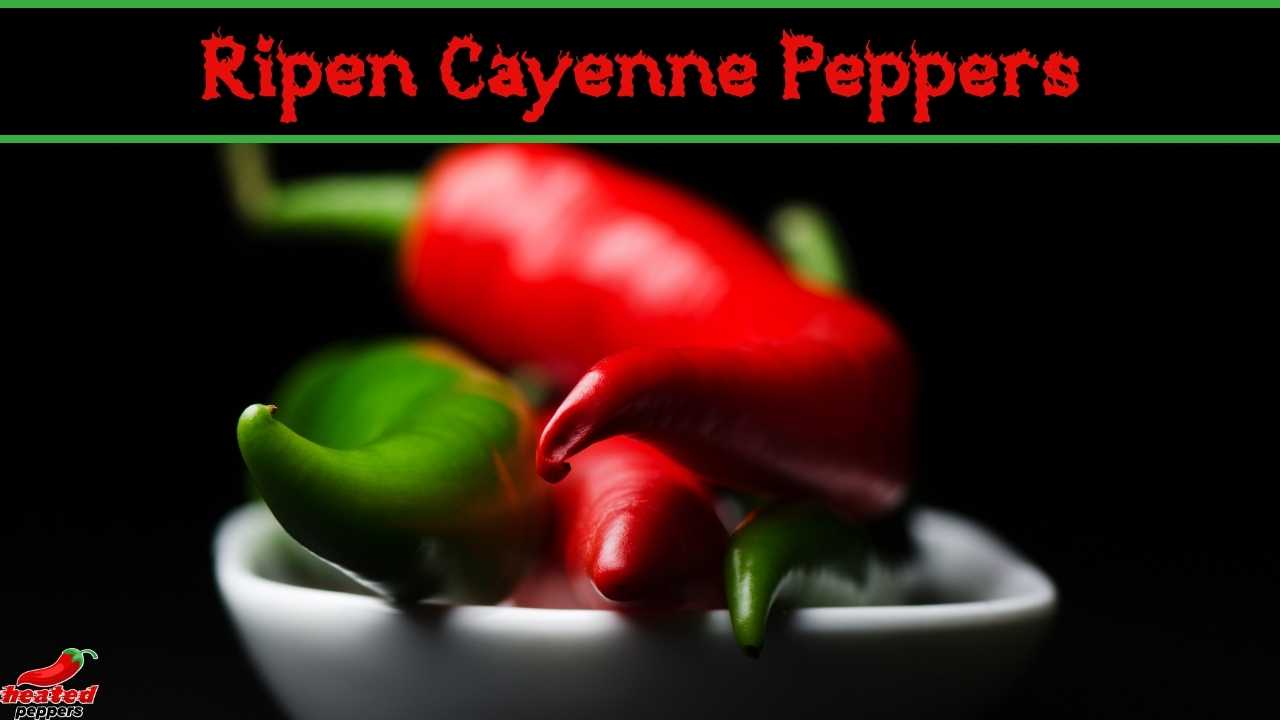Bird’s Eye and Cayenne are two commonly used spices in cooking that add flavor, color, and heat to dishes. While they share similarities, they also have differences that make each unique.
In this article, we’ll explore the origins, classification, description, uses, growing, flavor, and nutritional values of Bird’s Eye and Cayenne and compare them to each other.
Let’s learn more about these tasty seasonings!

What is the Main Difference Between Bird’s Eye vs Cayenne?
Bird’s Eye and Cayenne are both hot and spicy peppers used for their heat and flavor. However, Cayenne is a type of chili pepper that originated in South America and has been used in cooking for thousands of years, while Bird’s Eye pepper, also known as Thai chili, originated in Southeast Asia and is commonly used in Thai, Vietnamese, and Indonesian cuisines.
Origins of Bird’s Eye and Cayenne
What is Cayenne and Where Did it Come From?
Cayenne pepper is a type of chili pepper that originated in South America and has been used in cooking for thousands of years. It is a staple ingredient in Mexican, African, and Creole cuisine and is known for its heat and pungent flavor.
What is Bird’s Eye and Where Did it Come From?
Bird’s Eye pepper is a small, fiery chili pepper that originated in Southeast Asia and is commonly used in Thai, Vietnamese, and Indonesian cuisines. It is believed to have been brought to Southeast Asia by Portuguese traders in the 16th century.
Key Differences Between Cayenne Pepper vs Bird’s Eye
Classification
How is Cayenne Classified?
Cayenne pepper is a type of chili pepper that is classified botanically as a member of the species Capsicum annuum.
How is Bird’s Eye Classified?
Bird’s Eye pepper is classified as a member of the Capsicum frutescens species. This species includes a variety of chili peppers, including Tabasco peppers and Malagueta peppers.
Description
What Does Cayenne Look Like?
Cayenne peppers are small, thin chili peppers that measure about 2-5 inches in length and about 1/2 inch in diameter. They have a bright, vibrant red color that adds a pop of color to any dish.
They are usually dried and ground into a powder to be used as a spice, but you can also find them whole, dried, or even in their fresh form.
In terms of texture, the skin of the cayenne pepper is thin and slightly wrinkled, with a slightly rough texture.
The inside of the pepper is filled with seeds and a white, membranous flesh that is loaded with capsaicin, the compound responsible for the heat in chili peppers.
What Does Bird’s Eye Look Like?
Bird’s Eye peppers, also known as African Bird’s Eye chili, are small and fiery chili peppers that measure about 1-2 inches in length. They are bright red in color when ripe, but can also be yellow, green, or purple depending on the variety.
They are usually dried and ground into a powder to be used as a spice, but can also be used whole or fresh.
The skin of the Bird’s Eye pepper is thin and smooth, with a glossy texture. The inside of the pepper is filled with seeds and a white, membranous flesh that is also loaded with capsaicin.
Uses
How to Use Cayenne? Popular Dishes
Cayenne pepper is used to add heat and flavor to dishes, such as chili, hot sauce, stews, soups, and marinades. It is also used to make spicy condiments, such as Tabasco sauce.
How to Use Bird’s Eye? Popular Dishes
Bird’s Eye pepper is a popular ingredient in Southeast Asian cuisine and is used in dishes such as curries, stir-fries, and salads. It is also used to make chili paste and dipping sauces.
Growing
How to Grow Cayenne:
Cayenne pepper plants can be grown in warm climates and require full sun and well-draining soil. The plants are typically grown from seeds and should be spaced about 18 inches apart. Cayenne peppers can be harvested when they are fully ripe, which typically takes about 90 days from the time the seeds are planted.
How to Grow Bird’s Eye:
Bird’s Eye pepper plants can be grown in warm, tropical climates and require full sun and well-draining soil. The plants are typically grown from seeds and should be spaced about 12 inches apart. Bird’s Eye peppers can be harvested when they are fully ripe, which typically takes about 70-80 days from the time the seeds are planted.
Flavor
What Does Cayenne Taste Like?
Cayenne has a hot and pungent flavor that adds a significant amount of heat to dishes.
What Does Bird’s Eye Taste Like?
Bird’s Eye peppers have a pungent, fruity, and slightly sweet flavor, with a very high level of heat. The flavor of Bird’s Eye peppers can vary slightly depending on the variety and where it is grown, but it is generally described as being more complex than other chili peppers, with a slight bitterness and a hint of smokiness.
Nutritional Values and Benefits
Is Bird’s Eye Good for You?
Bird’s Eye pepper, like cayenne, is a nutritious ingredient that provides a range of health benefits. Here is a table that summarizes the nutritional value of Bird’s Eye pepper per 100 grams:
| Nutrient | Amount per 100g |
|---|---|
| Vitamin A | 0 mcg |
| Vitamin C | 242 mg |
| Potassium | 1120 mcg |
| Fiber | 19 g |
| Protein | 7 g |
| Carbs | 45 g |
| Fat | 0 g |
In terms of vitamins and minerals, Bird’s Eye pepper is a good source of vitamin C, which is an antioxidant that helps to protect the body against cellular damage and supports the immune system.
It also contains capsaicin, the compound responsible for the heat in chili peppers, which has been shown to have several health benefits, including reducing inflammation, boosting metabolism, and helping to relieve pain.
Is Cayenne Good for You?
Cayenne pepper, like Bird’s Eye pepper, is not only a flavorful spice but also a nutritious ingredient that provides a range of health benefits. Here is a table that summarizes the nutritional value of cayenne pepper per 100 grams:
| Nutrient | Amount per 100g |
|---|---|
| Vitamin A | 2,081 mcg |
| Vitamin C | 76.4 mg |
| Potassium | 2,014 mcg |
| Fiber | 12.01 g |
| Protein | 12.01 g |
| Carbs | 56.63 g |
| Fat | 17.27 g |
In terms of vitamins and minerals, cayenne pepper is a good source of vitamin C, which is an antioxidant that helps to protect the body against cellular damage and supports the immune system.
It’s also a good source of potassium, which helps to regulate blood pressure, maintain heart and muscle function, and support proper hydration.
Cayenne pepper is also a good source of manganese, which is important for proper bone development, wound healing, and healthy skin and hair. Additionally, manganese is involved in the metabolism of carbohydrates, proteins, and fats and helps the body to produce energy.
Cayenne pepper is also believed to have several health benefits, including reducing inflammation, boosting metabolism, and helping to relieve pain.
The active compound in cayenne pepper, capsaicin, has been shown to have anti-inflammatory and pain-relieving effects, making it a popular ingredient in topical pain-relieving creams and ointments.
Cayenne vs. Bird’s Eye Comparison Table:
| Bird’s Eye | Cayenne |
|---|---|
| Origin: Southeast Asia South America | Origin: South and Central America |
| Classification: Capsicum frutescens | Classification: Capsicum annum |
| Appearance: Small, round, bright red | Appearance: Bright red powder with a slightly grainy texture |
| Uses: Southeast Asian cuisine, chili paste, dipping sauces Mexican, African, and Creole | Uses: Hot and pungent flavor in spicy dishes, including chili, hot sauces, and marinades |
| Growing: Warm, tropical climates, full sun, well-draining soil | Growing: Requires a hot and humid climate for successful growth |
| Flavor: Spicy and slightly fruity, with a moderate to very hot heat level | Flavor: Hot and pungent, slightly bitter and tangy |
| Nutritional Value: Good source of vitamin C, potassium, and capsaicin | Nutritional Value: Rich in vitamins and minerals, including vitamins A and C, potassium, and iron |
| Benefits: Reduces inflammation, boosts metabolism, relieves pain Regulates blood pressure, supports proper hydration, helps produce energy | Benefits: May help boost the metabolism, improve circulation, and provide pain-relieving benefits |
| Heat Level: Bird’s Eye pepper is generally hotter than Cayenne pepper. | Heat Level: Hot to very hot |
| Substitution: Thai chili, serrano pepper, or cayenne pepper | Substitution: Can be substituted with other hot spices, such as crushed red pepper or dried chipotle pepper |
Note: The above information is based on general characteristics and may vary depending on the specific type of Bird’s Eye or cayenne.
FAQs
Can Cayenne Be Substituted With Bird’s Eye And Vice Versa?
Yes, Cayenne and Bird’s Eye peppers can generally be substituted for each other in recipes, although there may be some slight differences in taste and heat level.
Cayenne peppers are usually hotter than Bird’s Eye peppers, with a Scoville heat unit (SHU) level of 30,000 to 50,000, while Bird’s Eye peppers have a SHU level of 50,000 to 175,000. This means that if you substitute Cayenne peppers with Bird’s Eye peppers, the dish may end up being spicier than intended.
On the other hand, if you substitute Bird’s Eye peppers with Cayenne peppers, the dish may be slightly milder in terms of heat. However, both peppers have a similar flavor profile, so the substitution should not significantly affect the overall taste of the dish.
It’s always best to adjust the amount of pepper to taste, depending on personal preference and the specific recipe you are using. If you are unsure about the substitution, you can try a small amount first and adjust accordingly.
Is Cayenne or Bird’s Eye Hotter?
Bird’s Eye peppers are generally considered to be hotter than Cayenne peppers. Bird’s Eye peppers have a Scoville heat unit (SHU) level of 50,000 to 175,000, while Cayenne peppers have a SHU level of 30,000 to 50,000.
However, the heat level of both peppers can vary depending on the specific variety and growing conditions. Additionally, personal perception of heat can vary from person to person, so what one person considers to be extremely hot may be milder to someone else.
Overall, both Cayenne and Bird’s Eye peppers are relatively hot compared to other chili peppers, and they should be used in moderation to avoid overwhelming the dish with heat.
Bird’s Eye or Cayenne Which One is Better?
The choice between Bird’s Eye and Cayenne peppers depends on personal preference and the specific recipe being used. Both peppers have a similar flavor profile, with Bird’s Eye peppers being slightly more complex and fruity than Cayenne peppers.
Bird’s Eye peppers may be a better choice for those who prefer spicier food, while Cayenne peppers may be better for those who prefer a milder heat.
Conclusion
Bird’s Eye and Cayenne pepper are both versatile spices that add heat and flavor to dishes. While they have similarities, such as their origin in warm climates and their use in spicy cuisine, they also have differences, such as their flavor profiles, appearance, and heat level. By understanding the unique characteristics of each pepper, you can enhance your cooking and add variety to your dishes.





